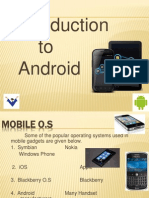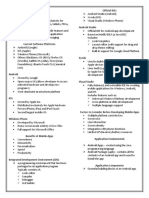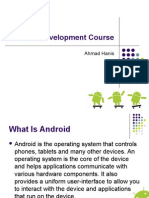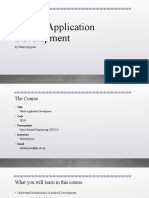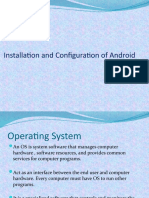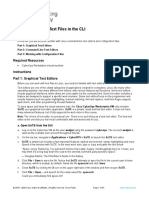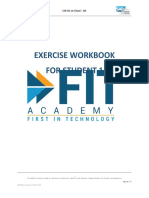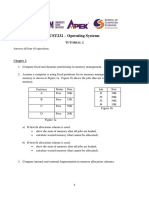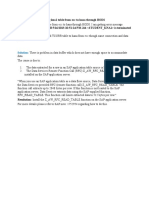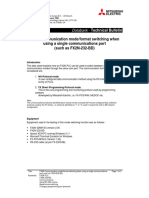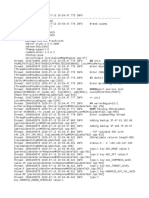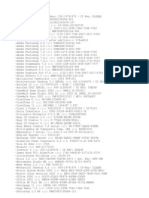0% found this document useful (0 votes)
31 views35 pagesAndroid Lecture 1
The document provides an introduction to mobile computing and Android development, outlining key components, advantages, challenges, and applications of mobile computing. It details the Android operating system, its architecture, development environment setup, and core components for building Android applications. Additionally, it covers programming languages, tools like IDEs and SDKs, and the evolution of Android versions.
Uploaded by
Kedir TahirCopyright
© © All Rights Reserved
We take content rights seriously. If you suspect this is your content, claim it here.
Available Formats
Download as PDF, TXT or read online on Scribd
0% found this document useful (0 votes)
31 views35 pagesAndroid Lecture 1
The document provides an introduction to mobile computing and Android development, outlining key components, advantages, challenges, and applications of mobile computing. It details the Android operating system, its architecture, development environment setup, and core components for building Android applications. Additionally, it covers programming languages, tools like IDEs and SDKs, and the evolution of Android versions.
Uploaded by
Kedir TahirCopyright
© © All Rights Reserved
We take content rights seriously. If you suspect this is your content, claim it here.
Available Formats
Download as PDF, TXT or read online on Scribd
/ 35





